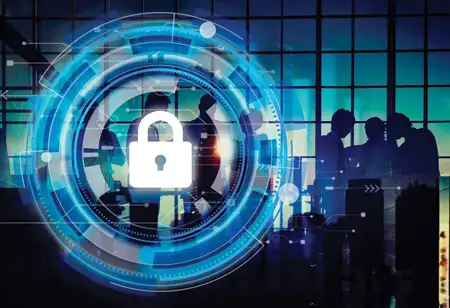THANK YOU FOR SUBSCRIBING
Be first to read the latest tech news, Industry Leader's Insights, and CIO interviews of medium and large enterprises exclusively from Gov CIO Outlook
THANK YOU FOR SUBSCRIBING

By
Government CIO Outlook | Thursday, July 11, 2024
Stay ahead of the industry with exclusive feature stories on the top companies, expert insights and the latest news delivered straight to your inbox. Subscribe today.
Blockchain's cryptographic features protect the privacy of the data, allowing authorized parties to access and view the evidence.
FREMONT, CA: The rapid proliferation of IoT devices has transformed various sectors by enabling seamless connectivity and data exchange. This advancement also brings significant security challenges, particularly in multimedia evidence preservation. A Blockchain-based digital chain of custody framework is crucial in addressing these challenges and ensuring the integrity, authenticity, and immutability of multimedia data collected from IoT devices. The primary concern with IoT devices is the integrity of the data they generate. The devices often gather sensitive multimedia evidence that can be critical in various applications, from law enforcement to industrial automation.
A Blockchain-based framework ensures that data cannot be altered or tampered with once data is recorded. The immutability is vital for maintaining the integrity of the evidence, as any attempt to change the data would be immediately detectable. Authenticity is another critical aspect of multimedia evidence. With numerous IoT devices contributing data, it is essential to establish the authenticity and origin of each piece of evidence. Each IoT device can be registered on the blockchain, and every data transaction can be time-stamped and digitally signed. It ensures that the data's origin is traceable and its authenticity can be verified at any time. Such a system fosters trust among stakeholders, as they can be confident in the credibility of the evidence.
Blockchain technology's decentralized nature enhances multimedia evidence's security and privacy. Traditional centralized systems are vulnerable to single points of failure and cyber-attacks. A Blockchain-based digital framework introduces high transparency and accountability in handling multimedia evidence. Each action taken on the data, such as creation, modification, or access, is recorded on the blockchain. The chain of custody can be established, demonstrating that the evidence has been handled according to established protocols and has not been tampered with. The level of transparency is crucial for maintaining the credibility of the evidence in judicial and regulatory processes.
IoT ecosystems often consist of diverse devices and systems that must interoperate seamlessly. A Blockchain-based framework can facilitate interoperability by providing a standardized platform for recording and verifying multimedia evidence. Smart contracts can automate and enforce rules and agreements, further streamlining operations and reducing the potential for human error. It is essential in sensitive applications where unauthorized access could have severe consequences. A Blockchain-based digital chain of custody multimedia evidence preservation framework addresses IoT ecosystems' security, integrity, authenticity, and interoperability challenges.
I agree We use cookies on this website to enhance your user experience. By clicking any link on this page you are giving your consent for us to set cookies. More info



